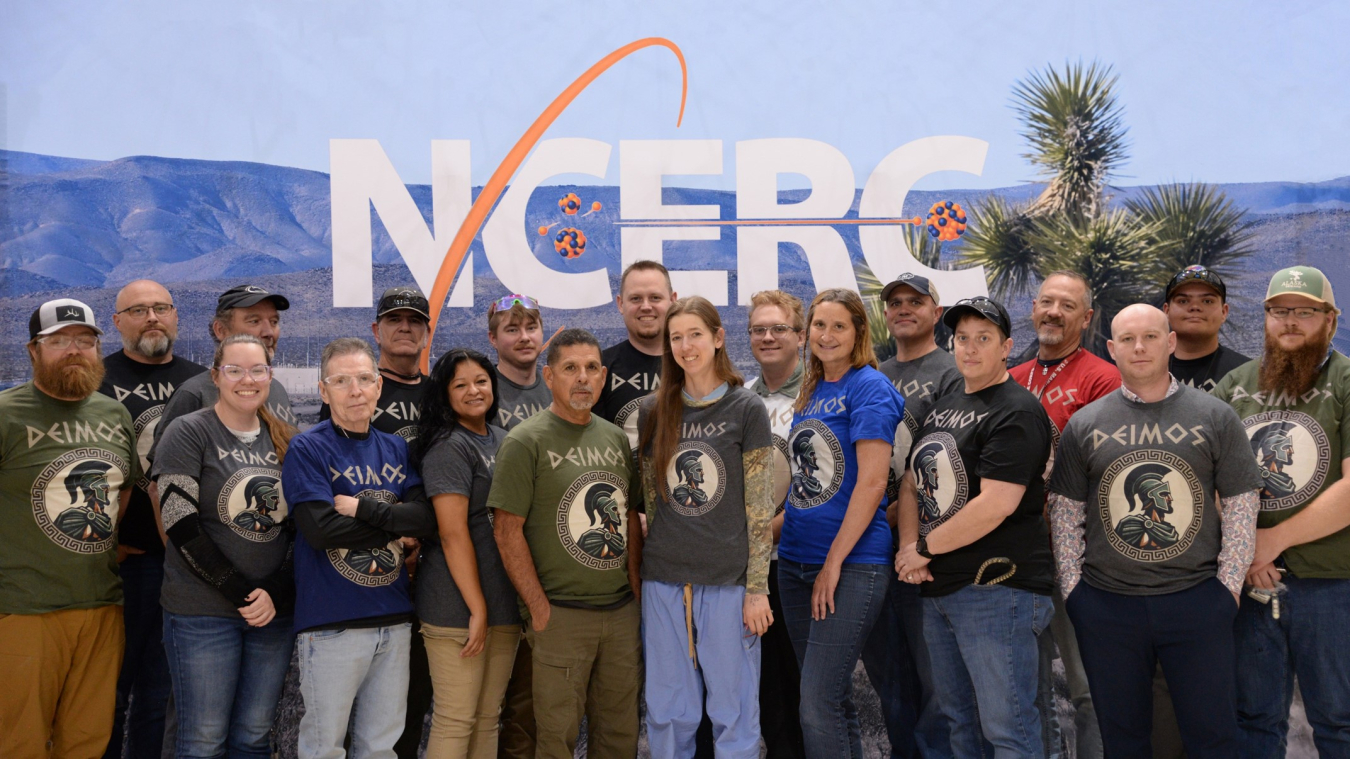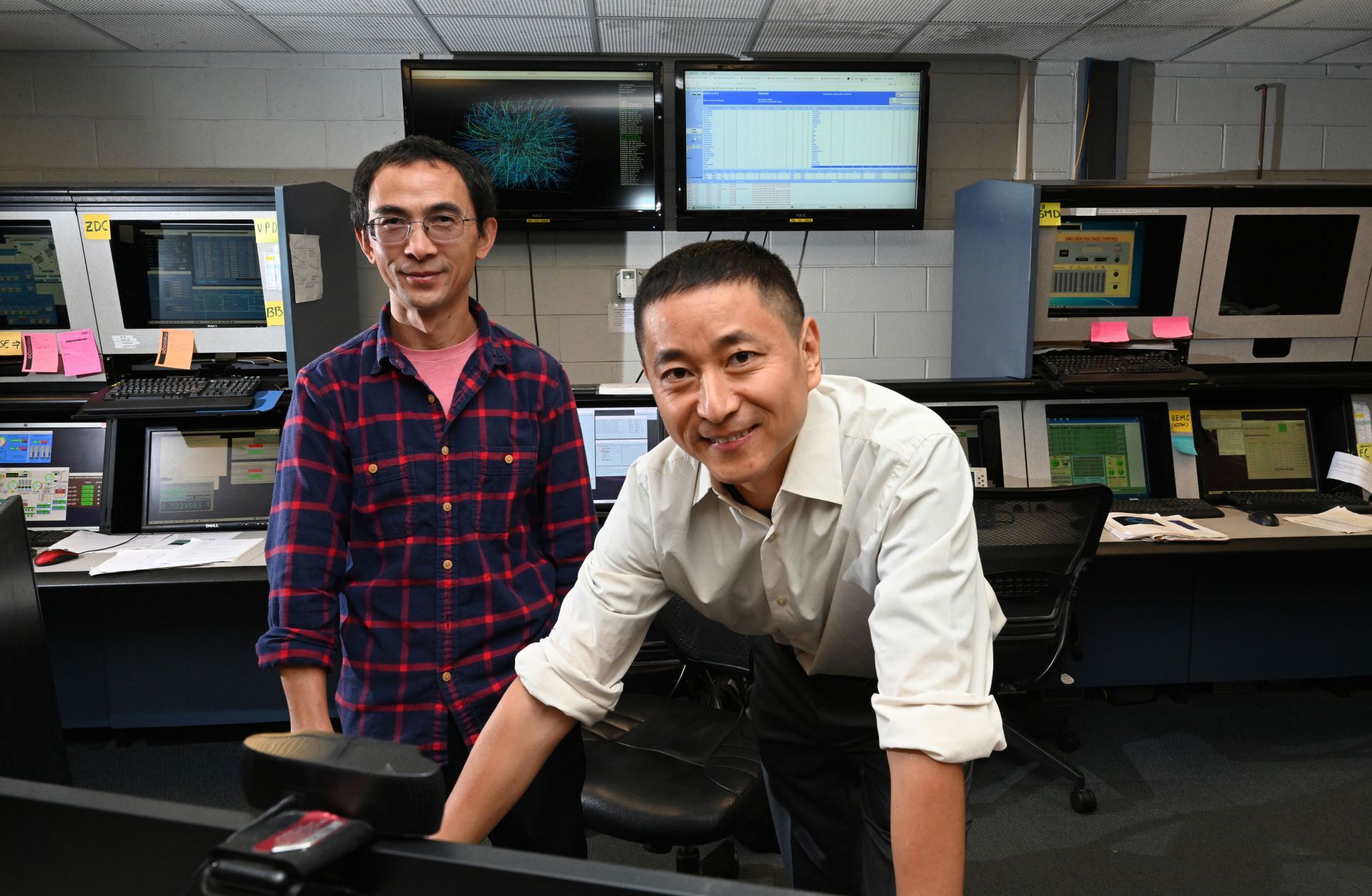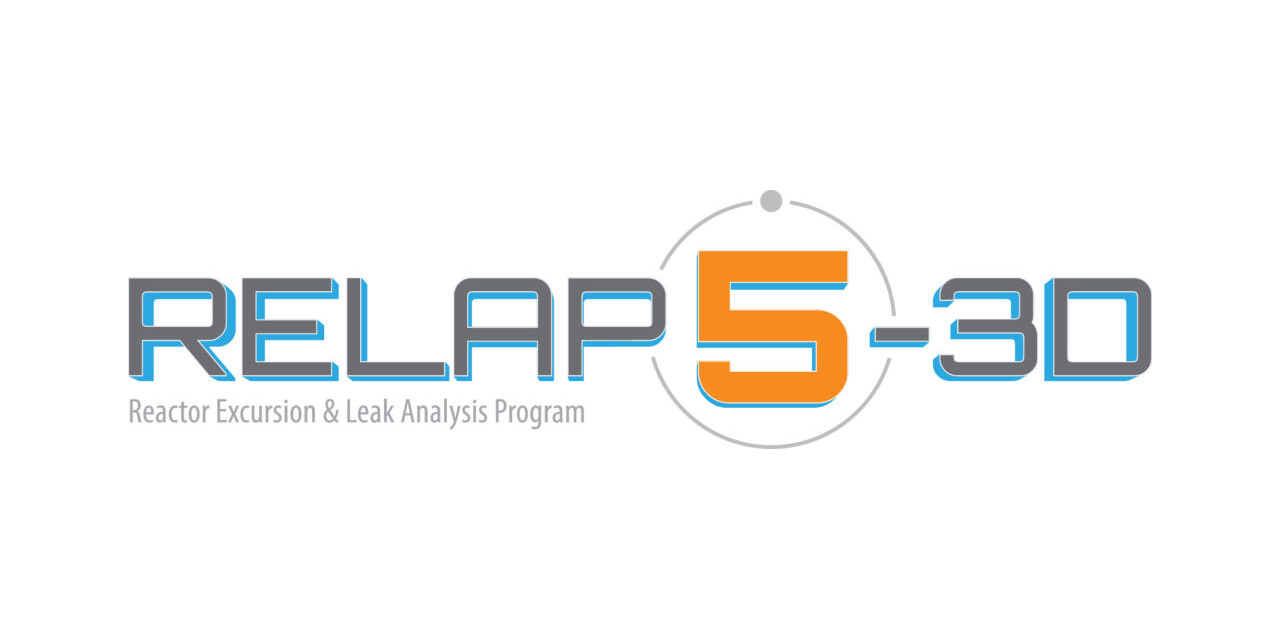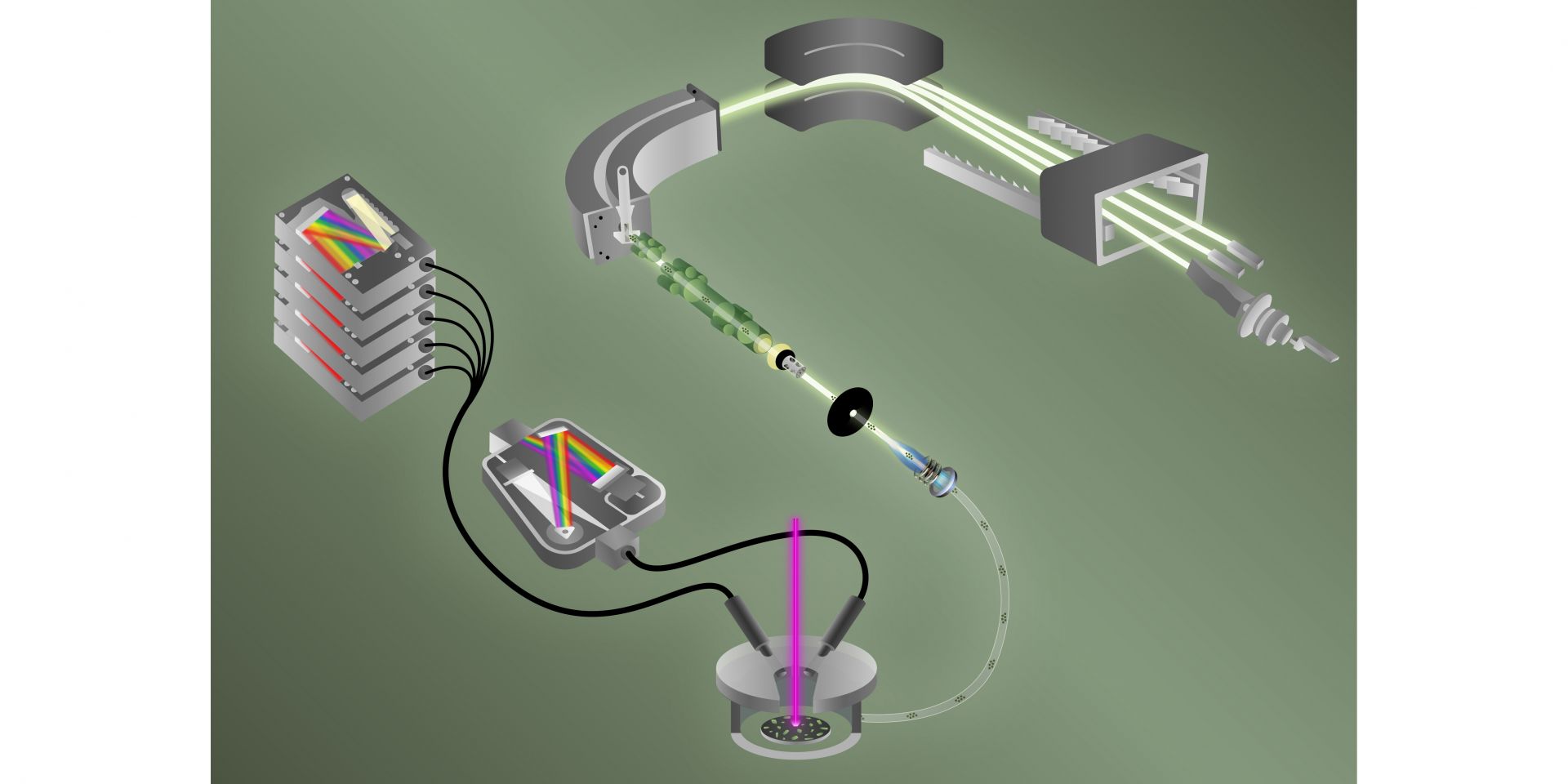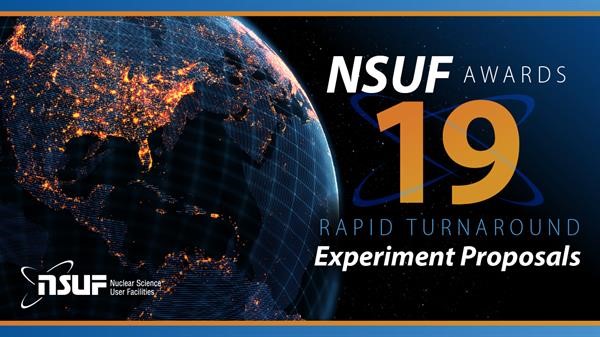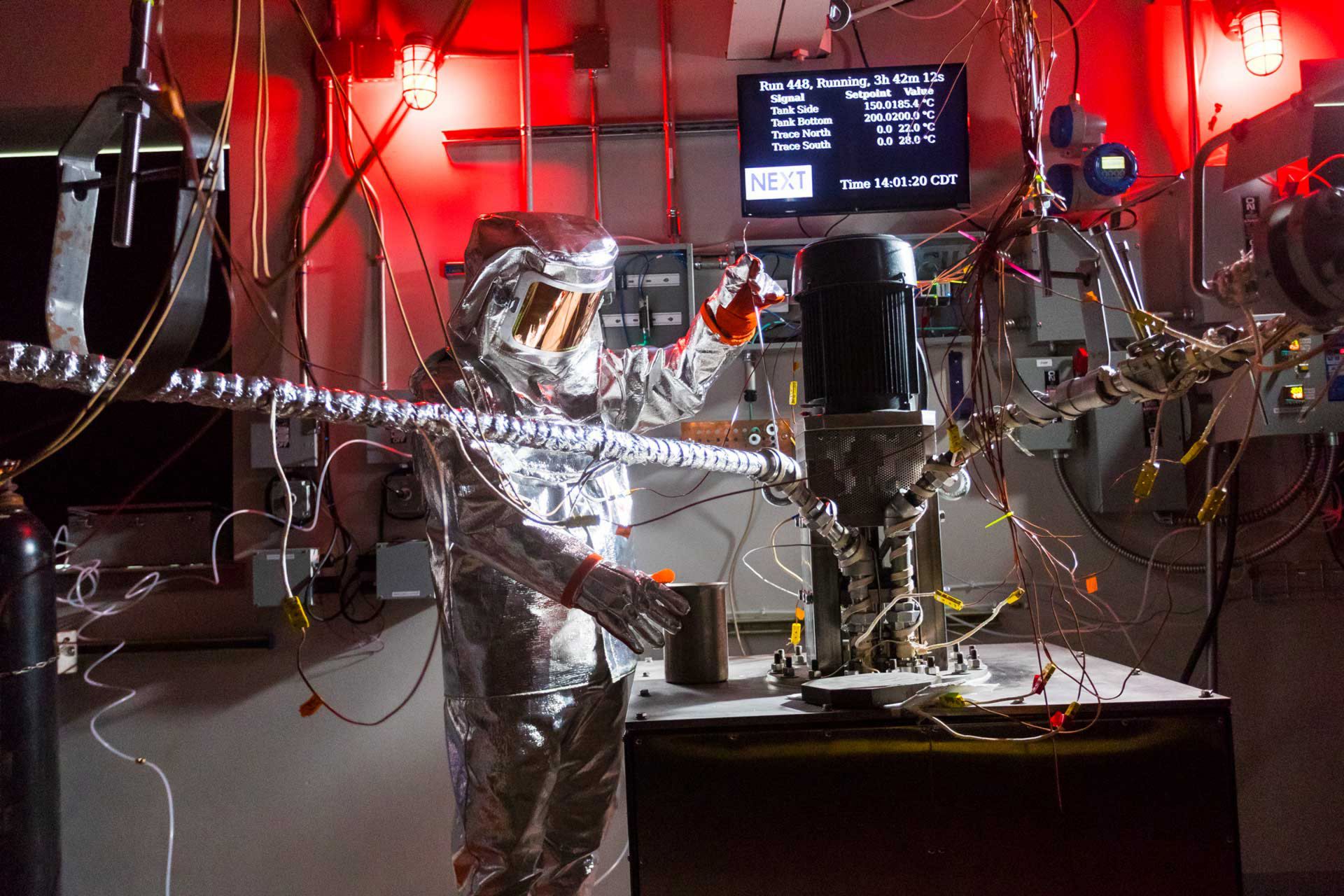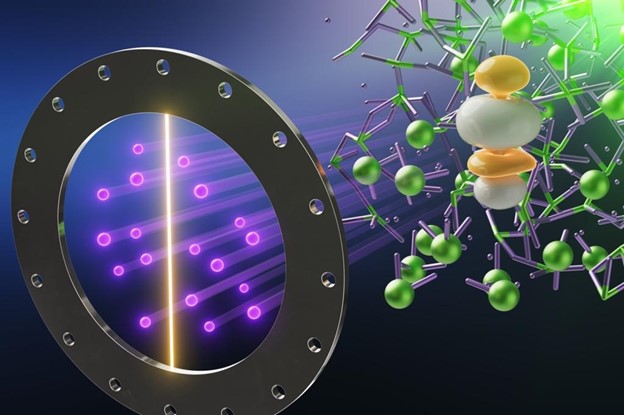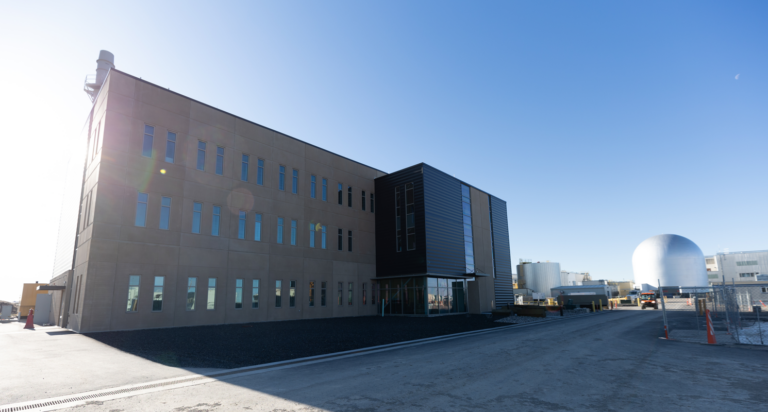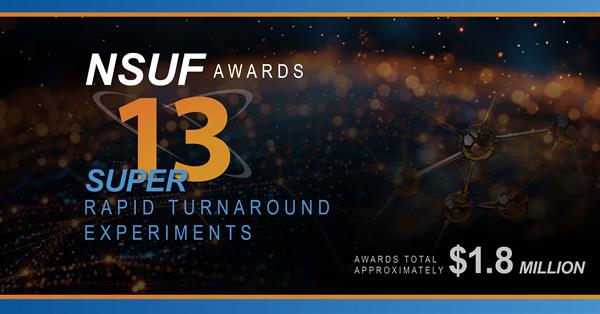Argonne director Paul Kearns, undersecretary of state for arms control and international security Bonnie Jenkins, EPRI chief nuclear strategy officer Neil Wilmshurst, and DOE acting assistant secretary for nuclear energy Michael Goff spoke at COP29 in Baku, Azerbaijan. (Photo: PNNL/Nazar Kholod)
Argonne National Laboratory will play a leading role in planning and rebuilding a nuclear-generated clean energy infrastructure for postwar Ukraine as part of the lab’s focus on developing small modular reactor applications to help countries meet energy security goals. The latest plans, described in a November 19 article, were announced on November 16 at COP29 in Baku, Azerbaijan.
A subset of the Deimos experiment team. (Photo: LANL)
Los Alamos National Laboratory researchers have performed a critical experiment using high-assay low-enriched uranium (HALEU) TRISO fuel. It is the nation’s first criticality safety experiment using HALEU fuel in more than 20 years. On November 21, LANL announced the work of its Deimos team, which earlier this year carried out an experiment at the National Criticality Experiments Research Center (NCERC), operated by LANL at the Nevada National Security Site.
STAR study coauthors Jiangyong Jia (front) and Shengli Huang, both of Stony Brook University, in the control room of the STAR experiment at BNL’s RHIC. (Photo: Kevin Coughlin/BNL)
Bernard Fontana (left) of Framatome and Cosmin Ghiță of Nuclearelectrica. (Photo: Framatome)
Framatome and SN Nuclearelectrica, a partially state-owned Romanian nuclear energy company, have entered into a long-term cooperation agreement to produce the medical isotope lutetium-177 at Cernavoda nuclear power plant in Romania. Lu-177 is a beta-emitting radioisotope used in targeted radionuclide therapy for the treatment of neuroendocrine tumors and prostate cancer.
The H9 Hall thruster, developed at UMich’s Plasmadynamics and Electric Propulsion Laboratory. (Image: William Hurley/University of Michigan)
Seeking spacecraft that can “maneuver without regret,” the U.S. Space Force is investing $35 million in a national research team led by the University of Michigan to develop a spacecraft with an onboard microreactor to produce electricity, with some of that electricity used for propulsion. But this spacecraft would not be solely dependent on nuclear electric propulsion—it would also feature a conventional chemical rocket to increase thrust when needed.
An enhanced CT scan process developed at ORNL can cut the time required to examine 3D-printed parts by one sixth. (Image: DOE)
A software algorithm developed at Oak Ridge National Laboratory has reduced the time needed to inspect 3D-printed parts for nuclear applications by 85 percent, the Department of Energy announced on November 1, and that algorithm is now being trained to analyze irradiated materials and nuclear fuel at Idaho National Laboratory.
The temporary pair of correlated nucleons pictured here is highlighted in purple. (Image: Institute of Nuclear Physics, Polish Academy of Sciences)
A breakthrough in the understanding of the properties of nuclear structure has been achieved by an international team of scientists comprising researchers from Massachusetts Institute of Technology, Fermi National Accelerator Laboratory, University of Munster in Germany, and Institute of Nuclear Physics at the Polish Academy of Sciences. The team, from the nCTEQ collaboration investigating nuclear parton (quark and gluon) distribution functions, developed a quark-gluon model that combined low-energy and high-energy concepts to reproduce the properties of atomic nuclei.
The EBR-II dome, site of the DOME advanced reactor test bed. (Photo: INL)
A technician works inside OPAL's reactor vessel during the maintenance and upgrade project. (Photo: ANSTO)
The only nuclear reactor in Australia has returned to power after a monthslong shutdown for planned essential maintenance and upgrades. The OPAL (for open-pool Australian light water reactor) research reactor at the Australian Nuclear Science and Technology Organization (ANSTO) campus in Sydney successfully went through the most significant engineering maintenance and upgrade project in its 17-year history.
ORNL’s tandem technologies detect fluorine and isotopes of uranium at the same time to discern the fingerprint of a nuclear material made for fuel or weaponry. (Image: Benjamin Manard and Jacquelyn DeMink/ORNL)
By combining two techniques, analytical chemists at Oak Ridge National Laboratory have for the first time simultaneously detected fluorine and different uranium isotopes in a single particle. Quickly detecting both elements together may help International Atomic Energy Agency inspectors determine if and when undisclosed enrichment has taken place. The findings, published in the Journal of the American Chemical Society, “push the limit” of how fast single particles can be characterized in terms of their chemical, elemental, and isotopic compositions, according to a September 26 news release from ORNL.
The NEXT Lab at ACU has been built to house and test the university’s new molten salt reactor design. (Photo: Rusty Towell/ACU)
I really think so. Especially after visiting Abilene Christian University’s new Dillard Science and Engineering Research Center, the home of the Nuclear Energy Experimental Testing (NEXT) Lab and where the university will test its new molten salt research reactor design. The visit was part of the 12th Thorium Energy Alliance Conference. NEXT Lab director and program manager Rusty Towell anticipates that the research reactor will be operational in two years, and I believe it will. What was most impressive is that the reactor is suited to be scaled to any size from small to large—a key feature in any decarbonized world.
In this illustration of oscillating UCl3 bonds, neutrons produced at the SNS (purple dots) scatter off molten UCl3 (depicted in green), revealing its atomic structure. Yellow and white shapes simulate data and represent the oscillating UCl3 bonds. (Image: Alex Ivanov/ORNL)
New research into the dynamics and structure of high-temperature liquid uranium trichloride (UCl3) salt—a potential fuel for molten salt reactors—has been published in the Journal of the American Chemical Society. A recent news release from Oak Ridge National Laboratory describes how researchers from ORNL, Argonne National Laboratory, and the University of South Carolina used ORNL’s Spallation Neutron Source (SNS) to document the unique chemistry of liquid UCl3 “for the first time.”
The outside of the Sample Preparation Laboratory at the Materials and Fuels Complex at Idaho National Laboratory. (Photo: INL)
Idaho National Laboratory has completed substantial construction of the first new hot cell facility at the lab site in 49 years—a Sample Preparation Laboratory (SPL) that will accelerate research, development, and qualification of structural nuclear materials for both existing and new nuclear reactors. In an announcement last week of the milestone and the ribbon-cutting ceremony held to mark it, INL said the SPL is expected to be fully operational in 2025.
Understanding how several different metals—such as the contents of PNNL’s space-bound cube—react to radiation in space will help scientists understand the potential impact of radiation on space travelers. (Photo: Eddie Pablo/PNNL)
When a SpaceX rocket lifted off from Kennedy Space Center on September 10 (see video here), sending a crewed commercial mission into low Earth orbit, an experiment designed by Pacific Northwest National Laboratory was onboard. Several high-purity metal samples will orbit Earth and absorb cosmic radiation for five days—including that from the Van Allen radiation belt—to help the lab answer questions about the radiation environment for manned space missions, according to a news release from PNNL.



